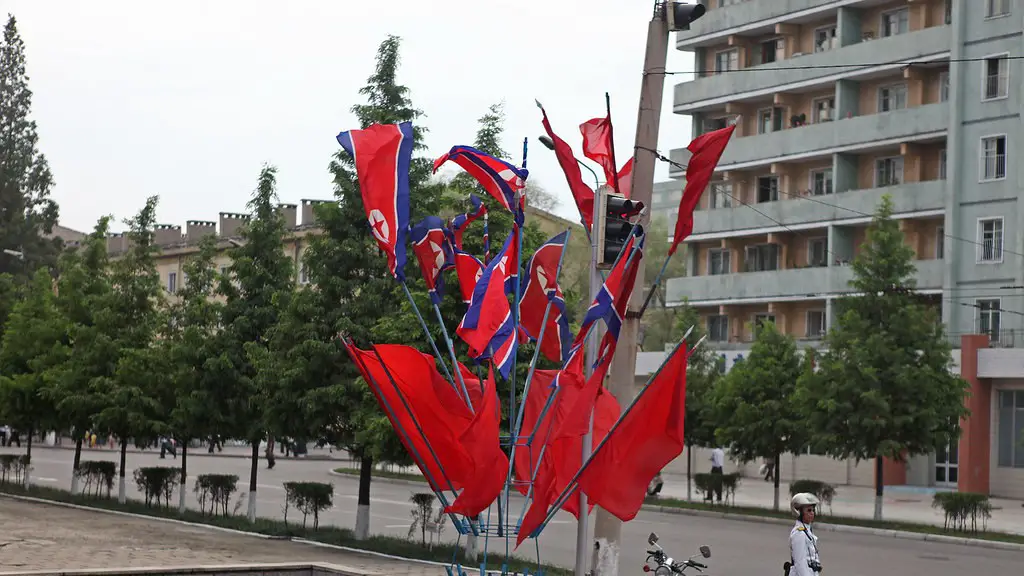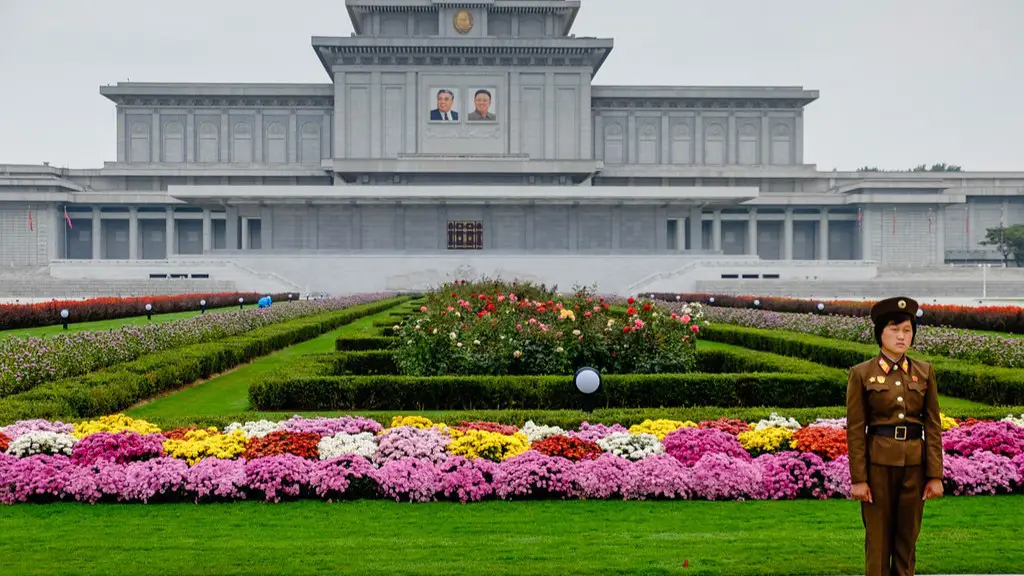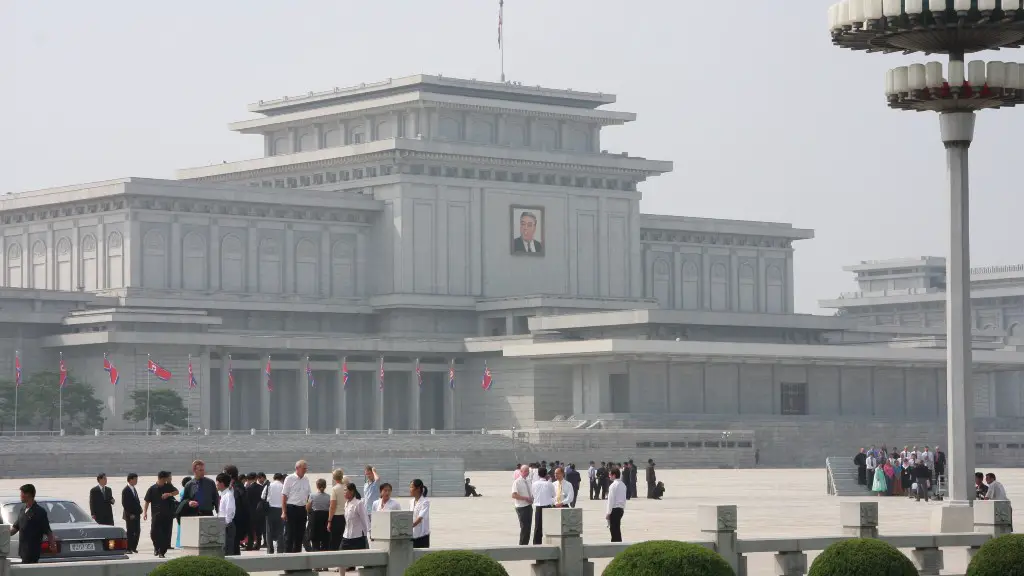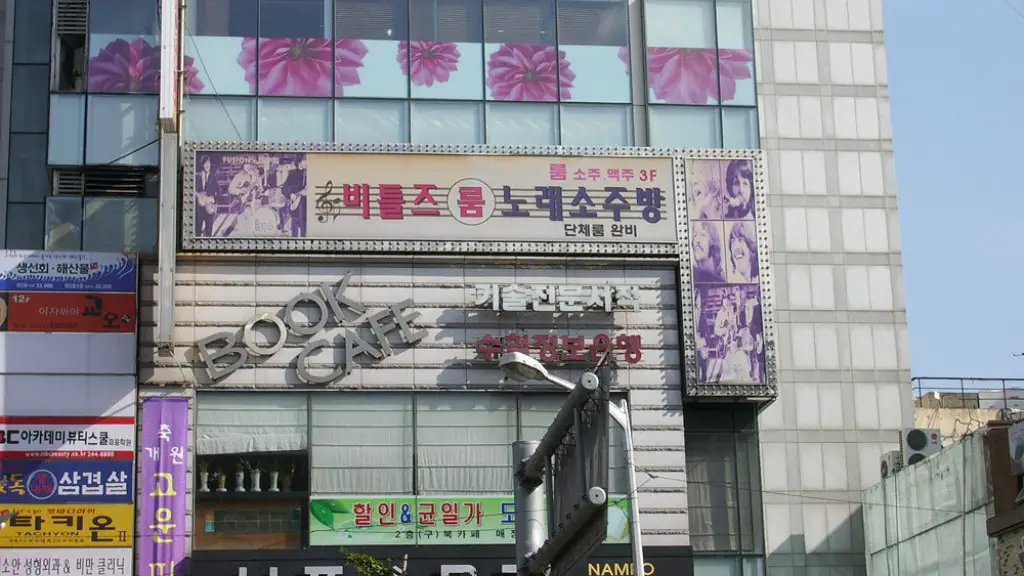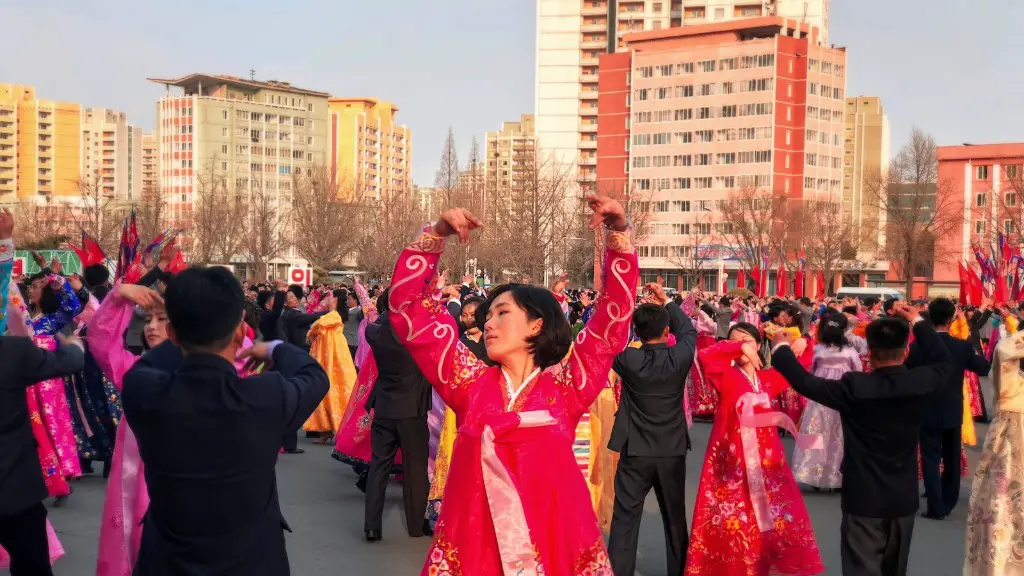North Korea has been shrouded in mystery and uncertainty due to its centrally planned socialist economy and heavily state regulation. Despite this, North Korea has its own distinct economy which is vastly different from the rest of the world. With an inward-focused policy, an unusual system of rewards and incentives, and a special emphasis on state security, the North Korean economy is an interesting example of adaptation and survival in an otherwise chaotic situation.
The tussle between North Korea and the international community has its roots in the economic sanctions imposed by the UN Security Council in 2006. This, along with the US-led sanctions, have had a profound effect on the North Korean economy and its GDP growth has been stunted for the last decade. According to a World Bank report, the overall economic growth of the country during the period of 1990–2015 was just 1.4%; compared to the global average of 3%.
The economic structure of the DPRK is highly centralized, with the state maintaining ownership and control of almost all industries and institutions. North Korea is heavily reliant on heavy industry and state-controlled production methods, which has resulted in the country having a low cost of production. Despite this, its overall lack of quality control and inefficient production processes lead to production output being well below the global average.
Furthermore, North Korea is heavily reliant on foreign aid and outside subsidies, especially from China and South Korea. This has been seen time and time again, when the North has been faced with economic crises or natural disasters and relied on outside help to bail it out. This dependence on foreign aid has been a major factor in its sustained economic stagnation.
When it comes to sanctions, North Korea has shown remarkable resilience in circumventing their restrictions. Despite the United Nations’ Security Council-imposed sanctions, North Korea’s exports to China have increased significantly. This is largely due to the rampant smuggling of weapons, minerals and other products across the two countries’ borders. This has allowed the North Korean economy to remain afloat, despite the stringent sanctions imposed.
Despite its economic woes, North Korea has made some significant strides in recent years. This can be seen in its moves towards economic liberalization – with the focus now being on boosting agricultural production and reorienting the economy towards consumer goods. In 2017, it opened the Pyongyang International Trade Fair to international business partners and expanded its unilateral free-trade zones in the hope of improving foreign investment and trade.
What the future holds for North Korea’s economy remains difficult to predict, as it is uncertain how the international community will respond to the economic reforms and political unpredictability of the country. Nevertheless, it is clear that the country has been able to find a way to survive in the face of international pressure and hostility.
Agricultural Liberties
In 2018, North Korea severed its ties to collective farming, freeing up 1.3 million hectares of agricultural land for small farmers who could grow their own crops, with the hoped result being that it would boost food production and increase the amount of food available to the North Korean population.
This move was also viewed as part of the North Korean government’s efforts to transition towards a market economy, although it remained limited on the size of the farms and in terms of the types of agricultural products that could be grown and sold. Nevertheless, it marked an important step forward in terms of economic liberalization.
Since these reforms, North Korea has seen an increase in agricultural production and a decrease in the degree of food insecurity in the country. It is estimated that the reforms have led to food production growing by about 5% each year and that the amount of people suffering from hunger has been reduced by about 20%.
However, it is important to note that the economic freedom given to farmers is still limited. Prices are still heavily controlled by the government and much of the food produced still goes towards the military. Despite these limitations, it is clear that North Korea is making tentative moves towards a more market-oriented economy.
Opening Up the Country
North Korea has also taken steps towards opening up the country to foreign investments. The creation of special economic zones, Free Economic and Trade Areas (FETAs) and the Pyongyang International Trade Fair are all examples of such efforts. The main aim of these initiatives is to try to attract foreign investment and technology.
Although these measures have met with some success, it is clear that more needs to be done to increase the country’s economic contacts with the outside world. North Korea still maintains a strict import and export policy and foreign investors are still wary about doing business in the country.
The country also remains highly dependent on its ally China, which offers economic support and technological assistance in return for political loyalty. This is particularly true in the areas of agriculture, mining and manufacturing. Therefore, it is clear that North Korea needs to move away from its traditional reliance on China in order for it to progress economically.
Economic Diversification
With the expansion of foreign trade, North Korea has also pushed for the diversification of its economy. This has included the introduction of new industries such as the pharmaceutical, healthcare, tourism and information technology sectors. These efforts have been met with some success and North Korea is now home to several large factories, scientific and technological institutes, and a small but growing private sector.
Despite these efforts, North Korea still heavily relies on outdated and inefficient production processes, which limit productivity and profitability. The country has yet to fully embrace the benefits of globalisation and technology, which further hamper its economic progress.
Given the country’s size and limited resources, it must be creative and resourceful in its economic strategies in order to maximize economic development. This means that the country needs to focus on activities that are sustainable, profitable, and beneficial to the North Korean population.
Exploiting Human Resources
North Korea has vast human resources that can be exploited for economic growth. With a population of over 25 million, the country has valuable potential for the development of its domestic workforce. North Korea has seen a slight rise in wages in recent years, largely due to increases in the minimum wage.
However, the country still lags behind most of the rest of the world in terms of wages and working conditions. Average wages in North Korea are just a fraction of those in the rest of the world, and the country has few provisions for resistance from the workforce. Additionally, there is still an unequal distribution of wealth in the country, which further hinders economic progress.
In addition to wages, the country must also focus on improving education and training in order to create a more skilled and competent workforce. In particular, North Korea must focus on equipping its citizens with the skills required for the digital economy, as this is becoming increasingly important in today’s globalised world.
By improving education and training, North Korea can ensure that its human resources are used to their full potential and can provide a foundation for long-term economic growth.
